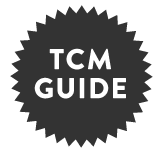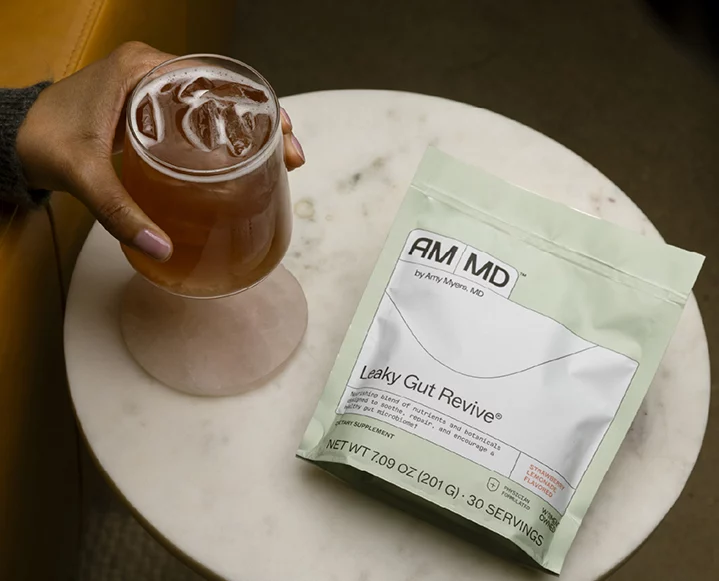In her book The Slim Calm Sexy Diet, author Keri Glasman walks readers through the all-important rules of getting stronger, calmer, healthier, more balanced and yes, thinner – all goals that have likely made it across your New Year’s to-do list… but, calmer? How does getting calmer fit in to all this hubbub about our health?
The Chalkboard Mag: Keri, in your last book, you talk about rules for getting stronger, healthier, thinner, more balanced… and calmer. That last one is often overlooked by folks interested in amping up their physical health. Why is getting calm such an important part of getting fit?
Keri Glassman: Eating right, staying healthy and getting exercise actually generate a sense of calm. Studies have shown that exercise is just as effective in treating depression as medication. With just a thirty minute walk, you can alleviate the stress of the afternoon – and don’t forget about yoga! One pose with a few breaths can quickly instill a sense of calm. When you are calm, you make better food decisions. When you make better food decisions, you are calm and you will even sleep better. In my new book The New You and Improved Diet, I talk about how all these lifestyle factors work together.
TCM: What are a few common triggers/foils that keep us from a calmer life? What solutions do you recommend?
KG: Today, we live in our world where there are stressful obstacles every way we turn, preventing us from living calmer lives. Whether it’s work, family, finances or even your relationship with food, or the day-to-day tasks like commuting to work in traffic can really affect us. While it’s difficult to eliminate these stressors altogether, they can be managed to some degree with a simple meditation using an 8 count breath. I know what you’re thinking: “Huh? Breathing?” But it’s true! Mindful breathing is as simple as counting to eight. Breathe in while counting to eight, hold your breath for a heartbeat or two and then exhale slowly while counting to eight. Feel better already, don’t you? Small doses of meditation have been proven to be enormously effective and help dial down the damaging effects of stress.
TCM: What foods/changes in diet play a helpful role in our quest for calmness?
KG: Believe it or not, there are plenty of foods that can help you manage your stress levels (just like there are many foods that can contribute to stress). I know, I know – everyone has their stress-busting comfort foods but I’m not talking about those! I’m talking about real foods that contain powerful nutrients, such as complex carbs, that help you better manage stress, and they also offer nutritional support to help your body bounce back from the biological effects of stress. Examples of these foods are celery, cashews, chocolate, flax seed, grass-fed beef, oranges, red bell peppers, and oatmeal. Also, flipping your attitude about and towards foods helps to manage stress. When you are constantly wrestling with what you CAN’T eat and stressing out when you eat it, you are causing damage before you even take a bit! Instead, eat empowered. Think about what you CAN eat and focus on the positive benefits of those foods. Weight loss will follow.
TCM: You’ve been talking about fiber and its importance. Tell us more about why it’s important to get enough fiber, as well as how much we should try to get and how to best get it in?
KG: Dietary fiber is the part of plant foods that your body cannot digest. Fiber is classified into two categories: the kind that does not dissolve in water (insoluble fiber) and the type that does (soluble fiber). Soluble fiber retains water and turns to a gel-like consistency during digestion, therefore slowing the process of digestion as well as the absorption of nutrients. This is why you feel full for a longer period of time after consuming a high fiber meal versus a fiber-less one. Soluble fiber also helps to lower blood cholesterol and sugar levels. Insoluble fiber, on the other hand, helps to speed the passage of foods through the gastrointestinal tract and adds bulk to stool. It is best known for managing body weight, preventing constipation and reducing the risk of colon cancer.
We can get plenty of fiber from a diet rich in whole, natural foods, like fresh fruits, vegetables and whole grains and nuts and seeds. Most foods contain a mixture of both soluble and insoluble fiber, but some foods are particularly high in one type of fiber over the other. Foods that are high in soluble fiber include oatmeal, flaxseeds, oat bran and beans. Zucchini, celery, broccoli, and dark leafy vegetables are some examples of foods higher in insoluble fiber.
While I prefer to have you eat food and not numbers, you should know how much fiber you need, so you can be aware if you’re getting the right amount. Men need about 30 to 38 grams per day and women need about 21 to 25 grams.
- Psyllium: Psyllium comes already ground and is loaded with soluble fiber. Add a few teaspoons of this to smoothies or hot cereals for a fiber boost. One package (6 grams) of Konsyl Psyllium Fiber contains 5 grams of total fiber (3 grams of soluble fiber).
- Beans: Beans are versatile and affordable. Add black or pinto beans to your salad, puree white beans into a dip for veggies or fruit or go old-school and serve them with roast chicken and a salad. Beans are packed with fiber and countless other nutrients.
- Fresh vegetables: Did I already mention veggies? Can’t say it enough! As if I actually need another reason why it’s so important to get your vegetables in every day, the insoluble fiber in plant cells speeds up the passage of food and waste through your gut, leaving you with a clean and healthy functioning GI!
Win a copy of Keri’s new book: The new you and improved diet!
Want to know more about what Keri has to say on the subject? We’re giving away one copy of Keri’s new book The New You and Improved Diet! To win, share you best strategy for keeping calm – and healthy – below. May the best tip win!












